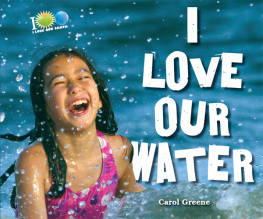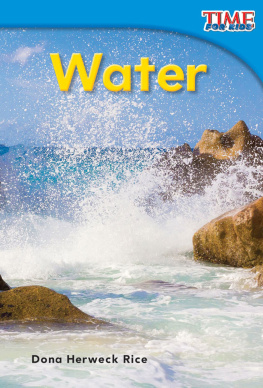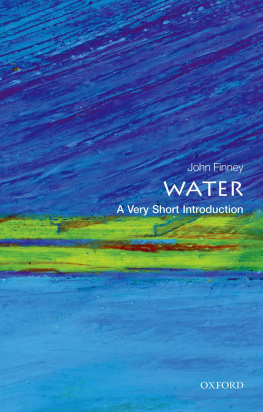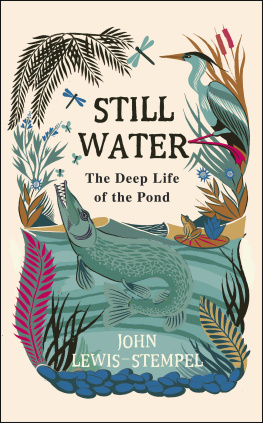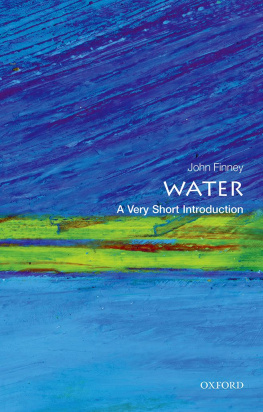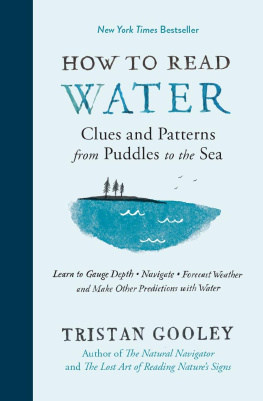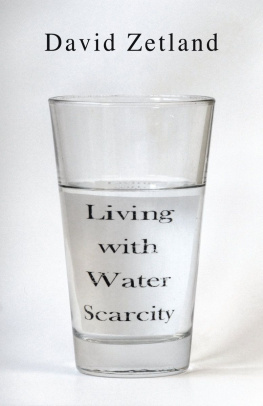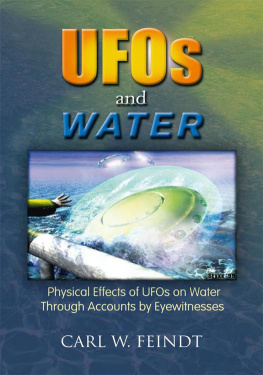Also by Tristan Gooley
The Lost Art of Reading Natures Signs
The Natural Navigator
The Natural Explorer
How to Connect with Nature

To the Gs, Ks, Ms, and Bs
How to Read Water: Clues and Patterns from Puddles to the Sea
Copyright 2016 by Tristan Gooley
Illustrations copyright 2016 by Neil Gower
Photographs copyright 2016 by Tristan Gooley
Additional at the end of the book
Originally published in the UK by Sceptre in 2016.
First published in North America by The Experiment, LLC, in 2016.
All rights reserved. Except for brief passages quoted in newspaper, magazine, radio, television, or online reviews, no portion of this book may be reproduced, distributed, or transmitted in any form or by any means, electronic or mechanical, including photocopying, recording, or information storage or retrieval system, without the prior written permission of the publisher.
The Experiment, LLC
220 East 23rd Street, Suite 301
New York, NY 10010-4674
www.theexperimentpublishing.com
Many of the designations used by manufacturers and sellers to distinguish their products are claimed as trademarks. Where those designations appear in this book and The Experiment was aware of a trademark claim, the designations have been capitalized.
The Experiments books are available at special discounts when purchased in bulk for premiums and sales promotions as well as for fundraising or educational use. For details, contact us at .
Library of Congress Cataloging-in-Publication Data
Names: Gooley, Tristan, author. | Gower, Neil, illustrator.
Title: How to read water : clues and patterns from puddles to the sea / Tristan Gooley ; illustrations by Neil Gower.
Description: New York, NY : The Experiment, 2016. | Includes bibliographical references and index. | Description based on print version record and CIP data provided by publisher; resource not viewed.
Identifiers: LCCN 2016021060 (print) | LCCN 2016016408 (ebook) | ISBN 9781615193592 (e-book) | ISBN 9781615193585 (cloth)
Subjects: LCSH: Water.
Classification: LCC GB671 (print) | LCC GB671 .G66 2016 (ebook) | DDC 551.46--dc23
LC record available at https://lccn.loc.gov/2016021060
ISBN 978-1-61519-358-5
Ebook ISBN 978-1-61519-359-2
Cover design by Sarah Smith
Author photo by Ben Queenborough
Manufactured in the United States of America
Distributed by Workman Publishing Company, Inc.
Distributed simultaneously in Canada by Thomas Allen and Son Ltd.
First printing August 2016
10 9 8 7 6 5 4 3 2 1
Contents
Strange Beginnings
An Introduction
We can look at the same stretch of water every day for a year and not see the same thing twice. How does one compound behave with such diversity? And what do the differences we see from day to day and from one place to the next actually signify? This is a book about the physical clues, signs, and patterns to look for in water, whether you are standing by a puddle or gazing out across miles of ocean.
Many books have been written in the past that claim to be about water, but even the good ones like to deceive by treating water as a container. In these books water is seen as a box that creatures live in or a window through which we can view things. In this book water will not be relegated in this way; it will be treated as the subject. Animals and plants are very interesting and will earn their place if they help to explain the behavior of the water we see, but not the other way around. And we will be focusing on water in its liquid form, not ice, snow, or steam. Unusually for a nature book, I will show no preference for organic over inorganic clues: A buoy is as good as a barnacle, if it helps us to read the water. That makes this book sit to one side of conventional natural history books, but it remains wholeheartedly a book about nature.
Water, many scientists now believe, is a substance so elemental to our universe that it may actually be many millions of years older than our own solar system. Fittingly, it has long held our attention; great minds have mined the experience of looking at water for millennia. Its impact on us philosophically, physiologically, and even spiritually has been thoroughly explored in literature. The late Roger Deakin pointed out that giraffes are the only mammals that cannot swim and that we have webbing between our thumbs and forefingers, unlike other apes, adding to the powerful arguments in support of the popular theory that we are drawn to water biologically as well as philosophically. Water is apparently good for our minds, bodies, and souls.
The anthropologist, Loren Eiseley, once opined:
If there is magic on this planet, it is contained in water.
That may be true, but what fascinates me is our ability to find meaning by understanding the physical causes of the patterns we see in water. Both perspectives, philosophical and practical, depend on taking the time to look and I strongly believe that this is much more likely if we have something to look for.
Understanding the things we see and the reasons for them does not reduce the beauty of the wholequite the opposite. As I discovered a few years ago, once you learn that you can measure the size of raindrops by looking at the colors in a rainbowthe more red, the bigger the dropsrainbows take on a new beauty and lose none. The same is true of all the signs we find in bodies of water. There is room for poetical and analytical minds to stand on the same quayside. We can appreciate the beauty of the glittering path below the setting sun and enjoy reading the clues in its form.
In a surprisingly hot Oslo, I helped scrub barnacles and algae from the underside of the inflatable boat. Preparations were being made to take one of the most beautiful vessels I have ever seen from Norway to England.
An old friend had been unable to fill his space as delivery crew and I could not have been happier to be standing on this Norwegian pontoon as his replacement. In front of me lay almost thirty yards of perfect lines, a modern classic yacht styled on the iconic J Class boats of the 1930s. The sun bounced off the water onto an immaculate white hull that supported dark decking and blemish-free brass.
This beautiful yacht was rumored to be the love-child of an American nautical architect who had married a very wealthy heiressit was that rarest of things: a daydream meeting an appropriate bank balance. Someone whispered that the log-burning stove in the luxurious saloon had to be built as a one-off, the front glass panel specially commissioned at a cost of thousands of dollars, to ensure that the unique stove would look perfect in its new home.
One of our tasks before setting sail was to cover every square inch of the gleaming paneled-mahogany interior with specially tailored, thick, transparent plastic covers. Working sailors were allowed to look at the wood through the plastic, but not to touch it. To even set foot on such a boat was a privilege, to sail her as crew so early in my career was almost too good to be true.
We slipped the mooring lines and then stowed the perfect white warps and fenders; they would not be needed again for a week. The yacht glided down the fjord and out to the sea. A couple of days passed and we settled into the open water routine. It was not long before we were weaving our way between vast steel oil rigs, the apocalyptic industrial dragons of the North Sea. The wind dropped and a summer mist engulfed us and grew into a proper fog. It hid the oil and gas rigs, which only revealed themselves as bright blips on the radar screen and the occasional angry orange flame that roared upwards through a mist so loyal to the area that it has its own name, the haar. We passed the time by quizzing each other on arcane nautical knowledge.


